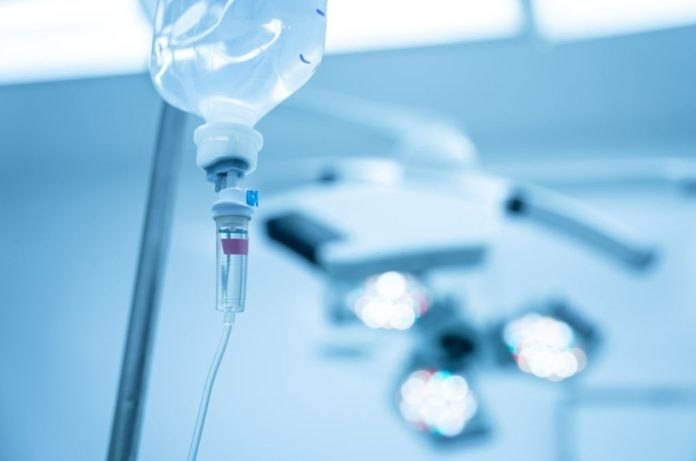The latest study on intravenous fluids being used in intensive care demonstrates that regular saline is just as effective as more expensive “balanced” solutions at keeping individuals alive and their organs working.
The findings not only provide clinicians more confidence in the safety and advantages of saline solution, but they also have global ramifications for treatment availability and costs.
“Just about every patient admitted to the Intensive Care Unit (ICU) will receive intravenous fluids for resuscitation or as part of standard treatment,” says Professor Simon Finfer AO.
“However, the best choice of fluid has been a longstanding issue of debate as some fluids were approved and licensed for use based on trials in small numbers of patients looking only at short term outcomes.”
Balanced multi-electrolyte solutions, or BMES, are a form of intravenous fluid that more nearly matches the body’s typical amounts of key minerals. Since concerns regarding increased rates of renal injury and death related to saline, despite the fact that this had not been confirmed in clinical trials, the use of BMES has increased.
To address this ambiguity and assist clinicians in selecting the optimum fluid for their patients, George Institute researchers planned and led the Plasma-Lyte 148® versUs Saline (PLUS) study, which enrolled over 5,000 patients from 53 sites across Australia and New Zealand.
Adult patients who required intravenous fluid resuscitation for their underlying medical condition were recruited from participating ICUs during the study period. The patients were monitored for 90 days after therapy since prior study had indicated that one in every four patients would die during this timeframe.
The researchers were especially interested in death rates in individuals who were given BMES or saline while in the ICU. At 90 days after therapy, the BMES and saline groups both had the same number of deaths.
The number of days the patients required mechanical breathing, kidney dialysis, ICU and hospital survival time, as well as significant healthcare cost parameters, were comparable amongst the groups.
“We found no evidence that using a balanced multi-electrolyte solution in the ICU, compared to saline, reduced risk of death or acute kidney injury in critically ill adults,” adds Prof Finfer.
“In our first trial, we compared the commonly used saline with another fluid, albumin – and in the second trial, saline with Hydroxyethyl Starch or HES solution that was also widely used for fluid resuscitation around the world.”
“We found saline was as good as albumin and better for patients with a traumatic brain injury, and saline had similar outcomes to HES without the associated toxicity.”
“Our researchers have changed the way the medical world thinks about intravenous fluids and have demonstrated that the choice of fluid should be treated with the same care and attention as the prescription of any drug,” concluded Prof Finfer.
Source: 10.1056/NEJMoa2114464
Image Credit: Getty
You were reading: Commonly used saline is good at keeping critically ill patients alive and their organs working, says new study
